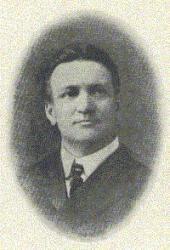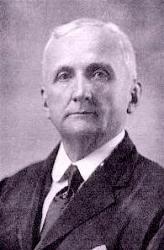Planning worship?
Check out our sister site, ZeteoSearch.org,
for 20+ additional resources related to your search.
- |
User Links
Search Results
When My Savior I Shall See
Author: P. P. B. Appears in 26 hymnals Refrain First Line: Satisfied with love divine Used With Tune: [When my Savior I shall see]
When My Savior I Shall See
[When my Savior I shall see]
Appears in 19 hymnals Composer and/or Arranger: P. P. Bilhorn Incipit: 54565 54443 47665 Used With Text: When My Savior I Shall See
[When my Savior I shall see]
[When my Saviour I shall see]
Appears in 1 hymnal Composer and/or Arranger: A. J. Showalter Incipit: 34326 71571 25524 Used With Text: Then Shall I Be Satisfied
[When my Saviour I shall see]
When My Savior I Shall See
Author: P. P. B. Hymnal: Songs of Redemption and Praise. Rev. #13 (1906) Refrain First Line: Satisfied with love divine Languages: English Tune Title: [When my Savior I shall see]
When My Savior I Shall See
When My Savior I Shall See
Author: P. B. Hymnal: Bilhorn's Male Chorus No. l #23 (1893) Refrain First Line: Satisfied with love divine Languages: English Tune Title: [When my Savior I shall see]
When My Savior I Shall See
When My Savior I Shall See
Author: P. B. Hymnal: Crowning Glory #26 (1894) Refrain First Line: Satisfied with love divine Languages: English Tune Title: [When my Savior I shall see]
When My Savior I Shall See
P. P. Bilhorn

1865 - 1936 Person Name: P. B. Arranger of "When My Saviour I Shall See" in Crowning Glory No. 1 Pseudonyms: W. Ferris Britcher, Irene Durfee; C. Ferris Holden, P. H. Roblin (a anagram of his name)
================
Peter Philip Bilhorn was born, in Mendota, IL. His father died in the Civil War 3 months before he was born. His early life was not easy. At age 8, he had to leave school to help support the family. At age 15, living in Chicago, he had a great singing voice and sang in German beer gardens there. At this time, he and his brother also formed the Eureka Wagon & Carriage Works in Chicago, IL. At 18 Peter became involved in gospel music, studying under George F. Root and George C. Stebbins. He traveled to the Dakotas and spent some time sharing the gospel with cowboys there. He traveled extensively with D. L. Moody, and was Billy Sunday's song leader on evangelistic endeavors. His evangelistic work took him into all the states of the Union, Great Britain, and other foreign countries. In London he conducted a 4000 voice choir in the Crystal Palace, and Queen Victoria invited him to sing in Buckinghm Palace. He wrote some 2000 gospel songs in his lifetime. He also invented a folding portable telescoping pump organ, weighing 16 lbs. It could be set up in about a minute. He used it at revivals in the late 19th century. He founded the Bilhorn Folding Organ Company in Chicago. IL, and his organ was so popular it was sold all over the world. He edited 10 hymnals and published 11 gospel songbooks. He died in Los Angeles, CA, in 1936.
John Perry
P. P. Bilhorn
A. J. Showalter

1858 - 1924 Composer of "[When my Saviour I shall see]" in Perennial Songs Anthony Johnson Showalter USA 1858-1924/ Born in Cherry Grove, VA, he became an organist, gospel music composer, author, teacher, editor, and publisher. He was taught by his father and in 1876 received training at the Ruebush-Kieffer School of Music, Dayton, VA. He also attended George Root’s National Normal school at Erie, PA, and Dr Palmer’s International Normal at Meadville, PA. He was teaching music in shape note singing schools by age 14. He taught literary school at age 19, and normal music schools at age 22, when he also published his first book. In 1881 he married Lucy Carolyn (Callie) Walser of TX, and they had seven children: Tennie, Karl, Essie, Jennie, Lena, Margaret, and Nellie. At age 23 he published his “Harmony & composition” book, and years later his “Theory of music”. In 1884 he moved to Dalton, GA, and in 1890 formed the Showalter Music Company of Dalton. His company printed and published hymnals, songbooks, schoolbooks, magazines, and newspapers, and had offices in Texarkana, AR, and Chattanooga, TN. In 1888 he became a member of the M T N A (Music Teachers National Association) and was vice-president for his state for several years. In 1895 he went abroad to study methods of teachers and conductors in Europe. He held sessions of his Southern Normal Music Institute in a dozen or more states. He edited “The music teacher & home magazine” for 20 years. In 1895 he issued his “New harmony & composition” book. He authored 60+ books on music theory, harmony, and song. He published 130+ music books that sold over a million copies. Not only was he president of the A J Showalter Music Company of Dalton, GA, but also of the Showalter-Patton Company of Dallas, TX, two of the largest music publishing houses in the American south. He was a choir leader and an elder in the First Presbyterian Church in Dalton (and his daughter, Essie, played the organ there). He managed his fruit farm, looking after nearly 20,000 trees , of which 15,000 are the famous Georgia Elberta peaches, the rest being apples, plums, pecans, and a dozen other varieties of peaches. He was also a stockholder and director of the Cherokee Lumber Company of Dalton, GA, furnishing building materials to a large trade in many southern, central and eastern states. He died in Chattanooga, TN, and is buried in Dalton, GA. He loved hymns, and kept up with many of his students over the years, writing them letters of counsel and encouragement. In 2000 Showalter was inducted into the Southern Gospel Music Hall of Fame.
Note: Showalter received two letters one evening from former music students, both of who were grieving over the death of their wives. He had heard a sermon about the arms of Moses being held up during battle, and managed to form a tune and refrain for a hymn, but struggled to find words for the verses that fit. He wrote to his friend in OH, Rev Elisha Hoffman, who had already composed many hymns and asked if he could write some lyrics, which he gladly did.
John Perry
A. J. Showalter
P. H. Roblin
Arranger of "When My Saviour I Shall See" in Songs of Love and Praise No. 4 Pseudonym of Peter P. Bilhorn. See also Bilhorn, P. P., 1865-1936
P. H. Roblin


 My Starred Hymns
My Starred Hymns

